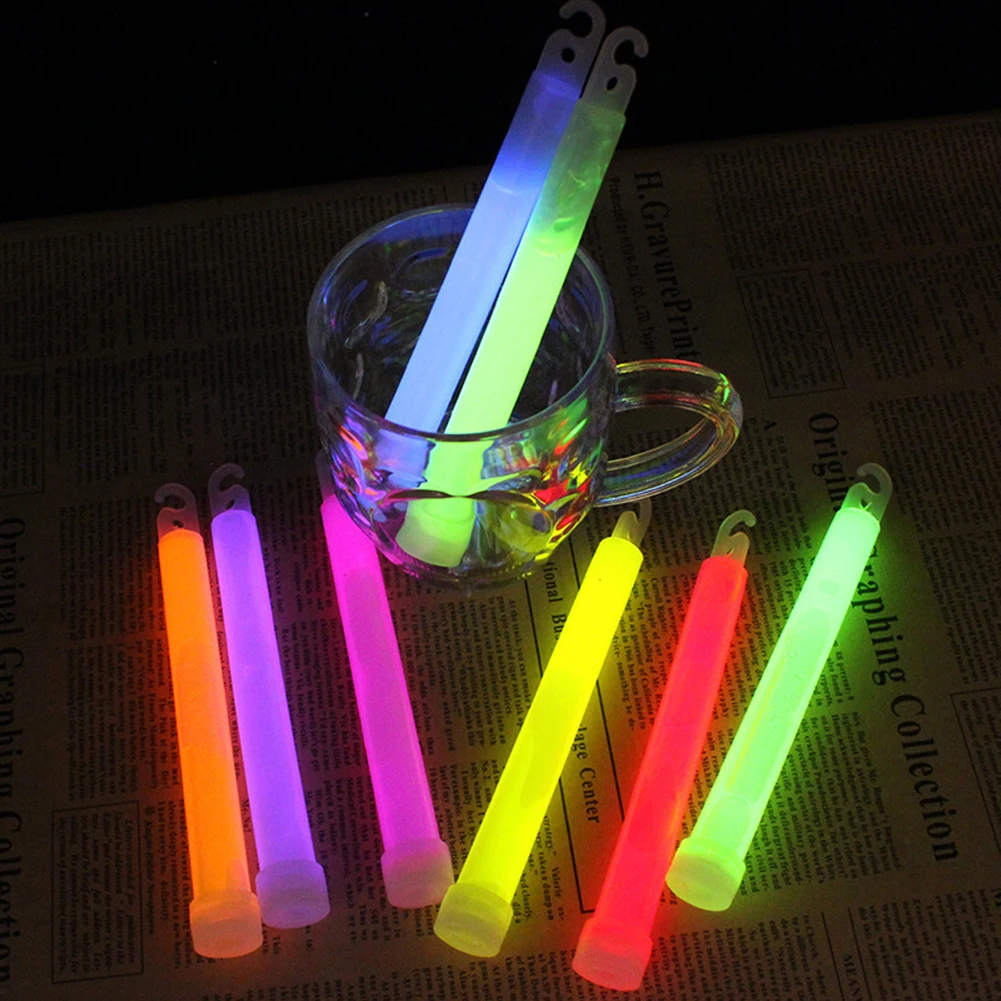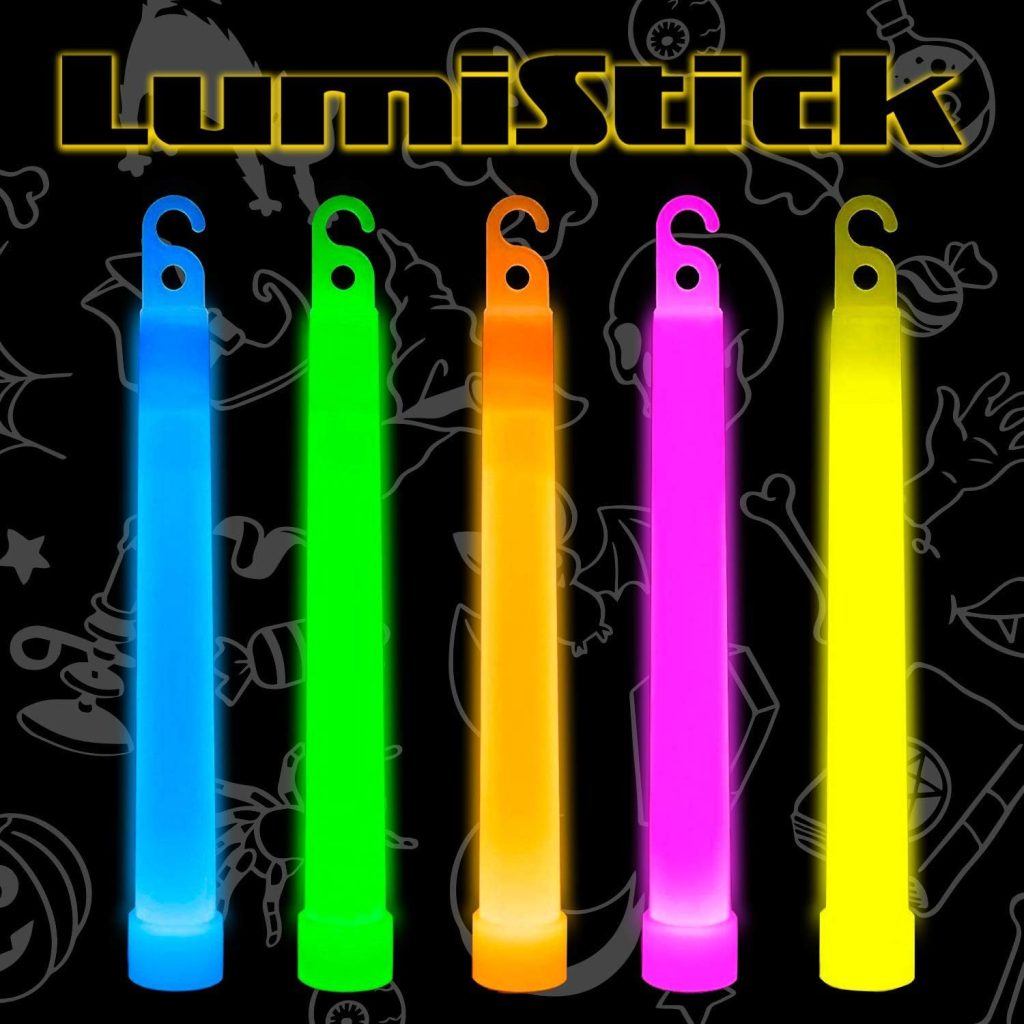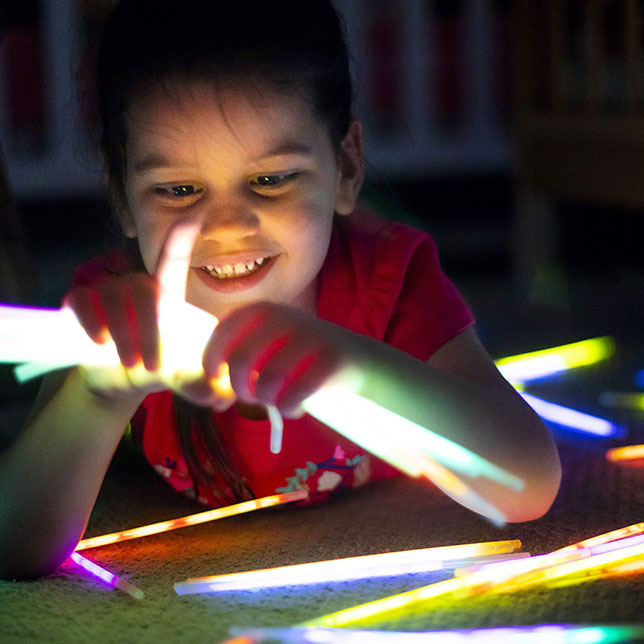Glow sticks are ubiquitous at parties, concerts, and outdoor events, admired for their vibrant, glowing light. However, questions often arise about their safety, particularly regarding their chemical content. Are glow sticks toxic? This article examines the chemical composition, potential hazards, safety precautions, environmental impact, and overall safety profile of glow sticks.
Contents
Chemical Composition of Glow Sticks
Key Ingredients
Glow sticks contain a mixture of chemicals that produce light through a process known as chemiluminescence. The main ingredients typically include hydrogen peroxide, phenyl oxalate ester, and a fluorescent dye. Hydrogen peroxide acts as an oxidizing agent, while phenyl oxalate ester reacts with the hydrogen peroxide to produce the necessary energy for the fluorescent dye to emit light. The color of the glow stick is determined by the dye used.
Safety Levels of Chemicals
Understanding the safety levels of these chemicals is crucial. Hydrogen peroxide, in moderate concentrations, is commonly used for its disinfectant properties but can be irritating to the skin and eyes. Phenyl oxalate ester is less familiar to the general public but serves a similar purpose in generating the energy needed for the glow. The fluorescent dyes vary but are designed to be non-toxic in the quantities used within glow sticks. These chemicals are sealed within a plastic tube to prevent exposure under normal use.

Potential Hazards
Skin and Eye Irritation
If the plastic casing of a glow stick breaks, the chemicals inside can come into contact with skin or eyes. This may cause irritation, redness, and discomfort. Immediate rinsing with water is usually sufficient, but prolonged exposure can lead to more severe irritation. Opening a glow stick intentionally or handling it roughly can increase the risk of breakage and exposure.
Ingestion Risks
Accidental ingestion of the liquid inside glow sticks is a concern, especially for young children or pets. While the chemicals are not highly toxic, they can cause nausea, vomiting, and irritation of the mouth and throat. It is important to contact a healthcare provider if ingestion occurs. The American Association of Poison Control Centers advises against inducing vomiting and recommends rinsing the mouth with water and drinking small amounts of milk or water.
Safety Precautions
Supervision and Handling
To minimize risks, glow sticks should always be used under adult supervision, especially by children. Instructing children on the proper use of glow sticks and the importance of not breaking them open can prevent most accidents. Store glow sticks out of reach of young children and pets to avoid accidental exposure or ingestion.
First Aid Measures
In case of skin contact with the liquid, wash the affected area with soap and water. If the liquid gets into the eyes, rinse thoroughly with water for at least 15 minutes and seek medical attention. For ingestion, do not induce vomiting. Instead, rinse the mouth with water and encourage the person to drink fluids. Contact a poison control center for further instructions. Having this information readily available can ensure prompt and effective action in case of an accident.
Environmental Impact
Chemical Pollution
Improper disposal of glow sticks can lead to chemical pollution, posing significant environmental risks. The primary chemicals in glow sticks, including hydrogen peroxide, phenyl oxalate ester, and fluorescent dyes, are not biodegradable. When glow sticks are discarded irresponsibly, these chemicals can seep into the soil and water sources. Over time, the chemicals can degrade into even more hazardous compounds, exacerbating pollution and harming ecosystems. Soil contamination can affect plant life by altering soil chemistry and reducing fertility.
This can, in turn, impact the animals that depend on those plants for food, creating a cascade of ecological disruption. Water contamination is particularly concerning because it spreads rapidly and affects a wide range of organisms. Aquatic life, including fish and amphibians, can be particularly vulnerable to the harmful effects of these chemicals. Polluted water can also enter the human food chain, potentially impacting human health over time. Therefore, it is crucial to manage the disposal of glow sticks properly to prevent such adverse environmental outcomes.

Wildlife Hazards
Wildlife faces significant risks from improperly discarded glow sticks. The bright colors of glow sticks can attract animals, who may mistake them for food or interesting objects to explore. When animals come into contact with the broken or leaking glow sticks, they can experience irritation or more severe health issues. For instance, contact with the chemicals can cause skin and eye irritation or lead to internal injuries if ingested. Birds, small mammals, and even aquatic creatures are at risk. If animals ingest glow stick chemicals, they could suffer from toxic exposure, leading to illness or death. Larger mammals, including pets, can also be affected if they come across these discarded items.
Furthermore, the impact extends beyond individual animals, potentially disrupting local ecosystems. For example, a decrease in one species due to chemical exposure can affect the entire food chain, leading to broader ecological imbalances. Ensuring proper disposal of glow sticks is critical to protecting wildlife and preserving natural habitats. By responsibly managing waste and educating others about the importance of proper disposal, we can mitigate these environmental hazards and contribute to the well-being of our planet’s diverse ecosystems.
Both the chemical pollution and wildlife hazards underscore the importance of responsible usage and disposal of glow sticks. By adopting better practices and spreading awareness, we can enjoy the benefits of glow sticks while minimizing their negative impact on the environment and its inhabitants.
Proper Disposal
Sealing and Disposing
After use, glow sticks should be sealed in a plastic bag to prevent any residual chemicals from leaking. Dispose of the bag in the regular trash. This helps contain the chemicals and prevents them from seeping into the environment. Avoid puncturing or burning glow sticks, as this can release toxic fumes and spread pollutants.
Community Guidelines
Check with local waste management services for specific disposal guidelines in your area. Some communities have special programs for disposing of hazardous materials, and glow sticks may be included. Participating in these programs can ensure environmentally safe disposal. Educating others about proper disposal can also contribute to broader environmental protection efforts.

Overall Safety Profile
Comparing Risks
While glow sticks contain chemicals that can be hazardous if mishandled, they are generally safe when used as intended. The risks associated with glow sticks are comparable to those of many household items that contain chemicals but are designed to be safe under normal use conditions. In fact, glow sticks are often considered safer than alternatives like candles or fireworks, which involve fire and higher risks of burns or explosions.
Responsible Use
Responsible use and proper disposal are key to minimizing any potential hazards associated with glow sticks. By following safety precautions and understanding the risks, users can enjoy the benefits of glow sticks without significant concerns. Awareness and education about the proper handling and disposal of glow sticks can further enhance their safety profile, making them a reliable and fun source of light for various occasions.
Glow sticks are generally safe and non-toxic when used correctly. The chemicals inside can cause irritation if mishandled, but they are not highly toxic. By understanding the chemical composition, recognizing potential hazards, following safety precautions, and ensuring proper disposal, you can safely enjoy glow sticks while minimizing their environmental impact. Responsible use and awareness are key to maintaining the safety and enjoyment of these fascinating light sources.


